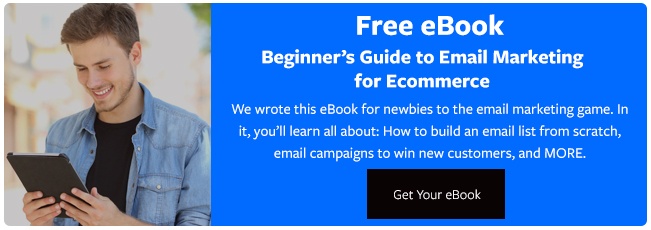
Artificial intelligence undeniably impacts marketing, sales, and business operations. It plays a crucial role in strategic analysis, targeting, and other aspects of the business world.
More than 50% of businesses have seen the benefits of using AI in their business processes, including increased efficiency and cost savings.
But how is AI used in email marketing?
This is a complex question due to the wide range of AI technology available. AI can handle data analysis, create email subject lines, shape your email marketing strategy, and more.
While there's an endless pool of topics to cover regarding AI and marketing, let's delve into the top benefits and best ways of using AI in email marketing.
What is AI-Based Email Marketing?
AI-based email marketing uses AI and machine learning models to make emails more relevant and engaging.
By analyzing customer behavior, AI can help you personalize email content, plan drip campaigns, and send at the best times for maximum engagement.
Predictive AI looks at past data to guess what customers might want, while generative AI creates new content. Together, they help businesses automate tasks, improve customer interactions, and increase satisfaction.
AI can also aid in finding new potential customers and predict how much revenue each customer could generate over time, making marketing and outreach more efficient.
Benefits of AI in Email Marketing
Here are some major benefits for marketers using AI in eCommerce email marketing.
1. Reduces Creative Burnout
AI chatbots like ChatGPT can generate ideas for your email content, making it easier to get started and saving you from creative block. It can also offer customized content suggestions. Even if you don’t use these ideas directly, they can inspire creativity and save time when planning campaigns.
2. Better Personalization
AI marketing tools can analyze customer behavior, interests, and habits, allowing for highly personalized emails. For example, suppose someone browses products but doesn't purchase them. In that case, AI can send a follow-up email highlighting those items, offering discounts, or notifying them of stock changes, thus increasing conversion chances.
3. Decreases Costs
AI-based email marketing reduces costs by optimizing campaign design. After using AI, 51% of companies saw their service operation costs drop by over 20%, thanks to automation and data-driven decision-making.
4. Predictive Analysis
AI can predict email campaign outcomes by analyzing past interactions, helping you adjust strategies for better results. These insights allow marketers to anticipate customer actions, such as who might unsubscribe or purchase, enabling proactive strategy adjustments.
5. Journey Mapping
Using AI, you can optimize the email journey based on subscriber interactions, from initial welcome emails to re-engagement campaigns. AI tools can even craft messages to guide subscribers to the next best action, improving the customer experience.
6. Churn Prediction
AI tools can also identify signs of customer disengagement before they unsubscribe by analyzing engagement patterns and purchase history. This allows for proactive engagement, such as sending special offers or personalized content, to retain at-risk subscribers.
10 Ways to Use AI in Email Marketing
Now, let’s have a closer look at how we can implement AI in email marketing processes.
1. Creating Compelling Subject Lines
AI is changing how marketers create email subject lines. It uses technology to make personalized and engaging messages that connect with readers.
AI can study past campaigns to find words and phrases that make people more likely to open emails. Tools like HubSpot can generate many different subject lines for various groups, making it more likely that people will pay attention.

Source: HubSpot
Marketers can keep improving by testing different subject lines to see which ones work best for different groups. Also, AI can use emojis, adjust tones, and look at what other companies are doing to be more creative and effective so emails stand out in busy inboxes.
2. Drafting Email Copies
Crafting engaging and relevant email body content is also a breeze with AI-powered tools like Copy.ai and Jasper.
These tools enable marketers to generate entire email drafts based on simple inputs about the campaign and target audience. AI can analyze what customers like and how they behave to create content that matches their interests. This can help businesses keep a consistent style in all their emails.

Source: Copy.ai
AI can even create templates for different situations, like introducing a new product or sending out newsletters, to ensure the messages are professional and consistent.
This also saves time and makes it easier for marketers to concentrate on the more essential parts of their campaigns.
3. Making Personalized Product Recommendations
91% of consumers are more likely to shop with brands that provide relevant offers and recommendations. AI also excels at analyzing customer data to provide personalized product recommendations within emails, significantly enhancing the customer experience and increasing conversion rates.

Source: QUYTECH
By examining browsing history, purchase behavior, and engagement patterns, AI tools like Salesforce Einstein and Dynamic Yield can suggest products that match individual preferences. This personalized approach boosts engagement and fosters stronger customer relationships.
Marketers can also use AI to identify cross-selling and upselling opportunities, promoting complementary products using dynamic product recommendations. This ensures that emails always display relevant items, increasing the likelihood of conversions.
4. Sending Automated Email Responses
Dealing with the same repetitive tasks can be time-consuming for businesses, so finding a way to automate them is crucial. AI can be a great help in this. It can assist in sending personalized messages and automatically generate relevant responses to the emails received.
AI can quickly understand the message context and generate a response that aligns well with it. This also helps improve email response time, which is a critical KPI for sales and customer service teams. You can also provide the tool with prompts or instructions on how you want your replies to be.
Tools like Mailchimp and HubSpot use AI to set email sequences and send automatic responses based on what their customers do, like signing up for something, purchasing, or asking questions.
These automated responses can include welcome emails, order confirmations, and follow-up messages so customers can communicate quickly and consistently.
5. Optimized Email Send Times
AI makes it easier to analyze recipient behavior and can determine the optimal times to send emails, maximizing open and engagement rates.
By examining time zones, past interactions, and peak activity periods, AI tools like Seventh Sense identify when recipients are most likely to engage with emails.

Source: Rialto Marketing
Using this data, you can schedule emails at the best times for each audience segment, ensuring that messages reach recipients when they are most attentive.
This sending time optimization also reduces the chances of your emails being lost in crowded inboxes, improving the overall effectiveness of email campaigns.
6. Dynamic & Interactive Content
Previously, implementing dynamic content in emails was a little hectic for marketers. It has always been a love-hate relationship. But, with AI, things have changed.
AI can now do the hard part for you: create dynamic and interactive emails. Tools like Movable Ink can help you create email content that could display different content each time it's opened based on user actions, such as product availability, user preferences, clicking on elements, or hovering over images.

Source: Email on Acid
This approach allows for real-time content updates, ensuring that emails remain relevant and engaging. Interactive content, such as quizzes, polls, and image carousels, encourages recipients to engage with the email, increasing click-through rates and conversions.
7. Email A/B Testing Using AI
A/B testing is a common way for sales and marketing people to experiment and optimize conversion rates.
However, A/B testing can be tough to do, and it only looks at a small part of the whole picture. That's where AI comes in. It helps marketers try out way more ideas in the same amount of time as an A/B test and look at the whole process instead of just one step.

Source: Zapier
Tools that use AI, like Optimail and Mailchimp, can look at different versions of emails to figure out which ones work best. This saves time and makes it easier for marketers to quickly use data to make decisions.
AI can also spot trends in how people act, which can help fine-tune email strategies to improve marketing campaigns.
8. Sentiment Analysis
Sentiment analysis, also known as opinion mining, examines the emotional expression within a text. It works by extracting subjective details to categorize the sentiment of the text. This process involves evaluating the attitudes, opinions, and emotions that are communicated through the text.

Source: ResearchGate
Hence, AI tools can analyze customer feedback, social media mentions, and email responses to gauge sentiment, identifying positive, negative, or neutral reactions. By understanding how recipients perceive your emails, you can tailor email content better to align with customer expectations and improve overall satisfaction.
AI can also identify potential issues or concerns, allowing marketers to address them proactively and enhance customer relationships. This deeper understanding of audience preferences enables marketers to create more relevant and impactful email campaigns.
9. Predictive Analytics
Predictive analysis is one of the most critical trends in today’s time. It simplifies making informed decisions for marketers by providing insights into what's likely to happen in the future.
Tools like IBM Watson and Google Analytics use historical data to predict future actions, such as which customers are likely to purchase or unsubscribe. It even helps you score leads based on it. By understanding potential customer behavior, you can refine your email marketing strategies to target specific segments, enhancing engagement and conversion rates.
Predictive analytics also helps identify trends and opportunities, allowing marketers to stay ahead of the competition and adapt to changing market conditions.
10. Email Security
Emails have always been a major threat to corporate cybersecurity, as phishing emails are a common tactic used by cybercriminals to access sensitive data, like login credentials and payment card details. In fact, new developments in AI have contributed to increased security issues due to AI identity fraud.
These phishing attacks have become much more advanced over time, making them hard for humans to spot. AI improves the detection of these harmful emails by going beyond the traditional, rules-based threat detection methods.
In the past, threat intelligence and Indicators of Compromise (IoCs) were created and shared manually, which limited their effectiveness. With AI, IoCs can be generated automatically and used in real time.
AI can also automatically quarantine or fix security issues based on pre-set rules. This speeds up the response to incidents, reducing the potential damage an attacker can cause.
How Do You Integrate AI with Email Marketing?
Integrating AI into email marketing begins with clearly defining your goals, such as increasing open rates or conversions. Use data analytics to segment your audience and choose the right AI tools for automation that align with your requirements.
Also, continuously monitor performance and ensure compliance with data privacy laws. Stay updated on AI trends to maintain a competitive edge and maximize the results of your email marketing efforts.





Leave a reply or comment below